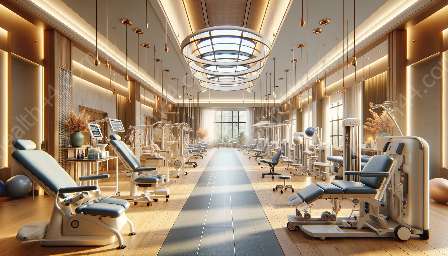When it comes to rehabilitation equipment and medical devices, traction devices play a crucial role in promoting healing and improving patient outcomes. In this comprehensive guide, we will delve into the world of traction devices, exploring their uses, benefits, and importance in the realm of medical devices and equipment.
The Role of Traction Devices in Rehabilitation
Traction devices are designed to apply controlled and specific forces to the body, commonly used in rehabilitation to aid in the treatment of musculoskeletal conditions and injuries. These devices work by gently stretching and decompressing the spine or extremities, promoting proper alignment and relieving pressure on affected areas. By incorporating traction devices into rehabilitation programs, healthcare professionals can help patients regain mobility, reduce pain, and improve overall function.
Types and Applications of Traction Devices
Traction devices come in various forms, each tailored to address specific rehabilitation needs. Cervical traction devices, for example, are employed to alleviate neck pain and improve cervical spine alignment. Lumbar traction devices target lower back issues, such as herniated discs and sciatica, by providing controlled traction to the lumbar spine. Additionally, extremity traction devices are utilized to treat conditions affecting the arms and legs, such as sprains, strains, and joint stiffness.
Moreover, traction devices can be utilized in both static and intermittent modes, allowing for customized treatment based on the patient’s condition and response to therapy. The adaptability of these devices makes them invaluable in the rehabilitation setting, catering to a diverse range of patient needs and conditions.
The Interface of Traction Devices with Medical Devices & Equipment
As part of the broader landscape of medical devices and equipment, traction devices contribute significantly to the advancement of rehabilitation and patient care. They integrate seamlessly with other rehabilitation equipment, such as therapeutic exercise machines and electrotherapy devices, to create comprehensive treatment regimens. By combining traction devices with other medical equipment, healthcare providers can deliver holistic care that addresses various aspects of a patient's condition, maximizing the potential for recovery and long-term well-being.
Enhancing Patient Outcomes and Recovery
One of the primary goals of using traction devices in rehabilitation and medical treatment is to enhance patient outcomes. By providing targeted and effective traction, these devices aid in improving mobility, reducing pain, and restoring functionality for individuals recovering from musculoskeletal injuries and conditions. The integration of traction devices into rehabilitation programs aligns with the overarching objective of maximizing patient recovery and boosting overall quality of life.
The Importance of Precision and Safety in Traction Device Usage
Given the delicate nature of rehabilitation and medical treatment, precision and safety are paramount when utilizing traction devices. Healthcare professionals must undergo specialized training to operate these devices effectively and ensure patient safety. Additionally, stringent quality control measures and regulatory standards govern the design and production of traction devices, guaranteeing their reliability and safety for clinical use.
Innovation and Advancements in Traction Devices
Continuous innovation drives the development of traction devices, leading to enhanced features and improved patient experiences. From advanced control mechanisms to ergonomic designs, modern traction devices prioritize patient comfort and treatment efficacy. Furthermore, the integration of digital interfaces and connectivity options elevates the utility of traction devices, enabling precise adjustments and data-driven treatment monitoring.
Conclusion
Traction devices stand as indispensable tools in the realm of rehabilitation equipment and medical devices & equipment, offering targeted therapeutic benefits and contributing to comprehensive patient care. Through their role in promoting healing, relieving pain, and restoring function, traction devices seamlessly integrate with the broader landscape of medical devices and equipment, ultimately advancing the field of rehabilitation and medical treatment.


